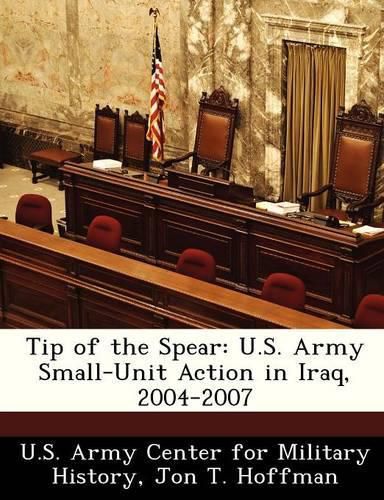Readings Newsletter
Become a Readings Member to make your shopping experience even easier.
Sign in or sign up for free!
You’re not far away from qualifying for FREE standard shipping within Australia
You’ve qualified for FREE standard shipping within Australia
The cart is loading…






The lightning campaign that toppled the Saddam Hussein regime in Iraq in the spring of 2003 at first seemed to herald the arrival of a new way of war, as Germany’s blitzkrieg had done at the beginning of World War II. But the initial victory in Iraq soon devolved into a persistent counterinsurgency conflict reminiscent of the long U.S. effort to pacify the Philippines after the quick defeat of Spain in 1898. In Iraq, American soldiers and their Coalition partners had merely traded one fairly weak and generally conventional opponent for a much more durable, diverse, and determined foe relying on the tactics of the guerilla and the terrorist. This volume focuses on that second and longer campaign of the war in Iraq, but it is not a narrative of the overall course of the conflict. Instead, it provides a soldier’s-eye view of the war in the form of detailed accounts of a handful of battles. Each one illustrates the everyday challenges that America’s soldiers face in a difficult struggle against an inventive and often elusive enemy. Weapons, doctrine, and procedures developed to fight a conventional campaign against a similar opposing force had to be adapted to fit a different type of conflict. The U.S. Army’s combat and support forces have shown both resourcefulness and resilience, while leaders and soldiers in the field have demonstrated the same courage as previous generations called upon to sacrifice in the name of freedom.
$9.00 standard shipping within Australia
FREE standard shipping within Australia for orders over $100.00
Express & International shipping calculated at checkout
The lightning campaign that toppled the Saddam Hussein regime in Iraq in the spring of 2003 at first seemed to herald the arrival of a new way of war, as Germany’s blitzkrieg had done at the beginning of World War II. But the initial victory in Iraq soon devolved into a persistent counterinsurgency conflict reminiscent of the long U.S. effort to pacify the Philippines after the quick defeat of Spain in 1898. In Iraq, American soldiers and their Coalition partners had merely traded one fairly weak and generally conventional opponent for a much more durable, diverse, and determined foe relying on the tactics of the guerilla and the terrorist. This volume focuses on that second and longer campaign of the war in Iraq, but it is not a narrative of the overall course of the conflict. Instead, it provides a soldier’s-eye view of the war in the form of detailed accounts of a handful of battles. Each one illustrates the everyday challenges that America’s soldiers face in a difficult struggle against an inventive and often elusive enemy. Weapons, doctrine, and procedures developed to fight a conventional campaign against a similar opposing force had to be adapted to fit a different type of conflict. The U.S. Army’s combat and support forces have shown both resourcefulness and resilience, while leaders and soldiers in the field have demonstrated the same courage as previous generations called upon to sacrifice in the name of freedom.